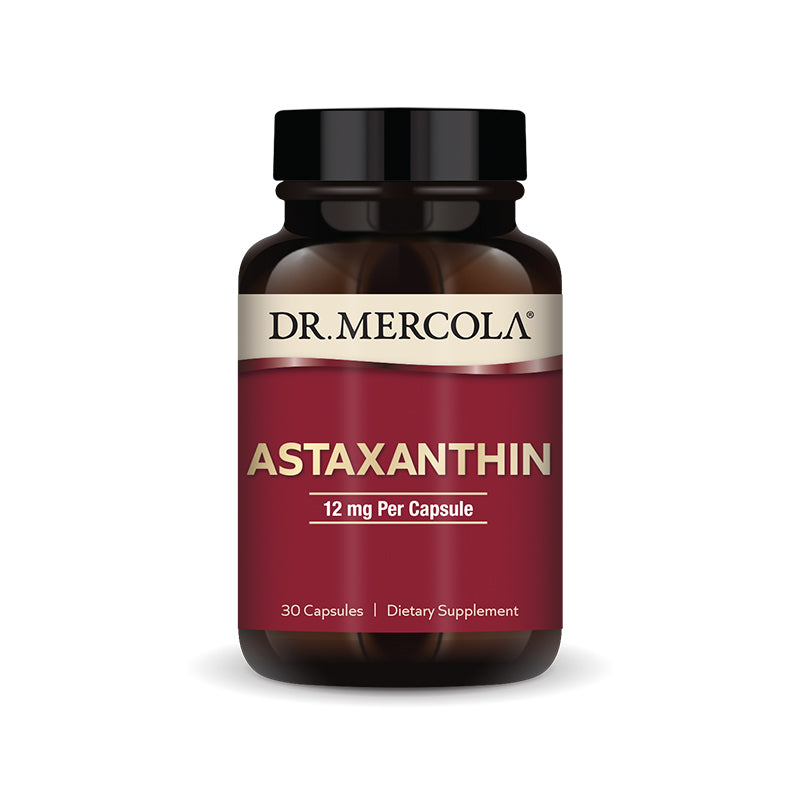Cart
0
by Glen Depke, Traditional Naturopath
Life force is on of those phrases that is thrown around often in holistic care and honestly, there are many different versions and interpretations of this. Today we are going to discuss the enzymes and life force. So back to our title, how’s YOUR life force? To know this answer let’s look a bit deeper at enzymes and life force. First off, enzymes operate on both a biological and chemical level, therefor “science” cannot measure or synthesize their life force. With this said, the life force is the very core of every enzyme. Without the life force within enymzes we would be nothing more than a pile of lifeless chemical substances such as vitamins, minerals, water and proteins. In regard to maintaining your health and healing enzymes, and only enzymes, do the work. They are what is referred to as the metabolism in one’s life force. We can now look at the three main categories of enzymes. These are metabolic enzymes, digestive (pancreatic) enzymes, food enzymes and enzyme supplements. To understand where your life force is within enzymes in your body, you need to “get” these categories. We’ll start with metabolic enzymes. These are enzymes that are produced in the cells of your body to allow the chemical processes of your body to occur at the rate for you to be able to sustain life. If you do not have metabolic enzymes, you have no life. It is truly that simple. Digestive enzymes or also know as pancreatic enzymes, are enzymes that are produced in your pancreas to be released in the first third of your small intestines to aid in breaking down your food properly to fully absorb and assimilate the necessary nutrients from your nutritional choices. Obviously this is extremely important because you are NOT what you eat, you ARE what you absorb and assimilate. The next category of enzymes are food based enzymes. This is simply recognized as the enzymes that are in every natural food to properly break this food down. I am sure you can imagine that if a plant or animal or human for that matter would die, the body would decompose. This breakdown of plant, animal or human tissue would occur based on the enzymes within each individual plant, animal or human. The key factor is to understand that this also significantly assist with breaking down plant or animal products that we would consume. Remember as mentioned above, every natural food has within it to break that food source down perfectly. The challenge is, that when we heat a food to a temperature of 118 degrees or above, the enzyme activity is destroyed. Now you may think, no big deal because we have the digestive or pancreatic enzymes to take care of this. Not so fast though! Did you know that for you pancreas to produce digestive enzymes, it has to take in other metabolic enzymes to convert to the necessary digestive enzymes? You may be thinking, this still sounds like a perfect system. Here’s the issue though. You do not have an unlimited amount of metabolic enzymes and remember, I mentioned earlier that you need these to sustain life. While “science” does not have a definitive answer on this yet, there is a theory that I happen to believe in that the body has a predetermined amount of metabolic enzymes it is going to produce and when the end arrives, so does yours. So with that said, do you really want to use up your metabolic enzymes to breakdown food? Absolutely a big fat NO! This is why many people eat raw foods. When you eat a raw food this will begin to predigest in the first third of the stomach, an area I refer to as the food enzyme stomach, which is turn makes digestion down the rest of the gastrointestinal tract so much easier. Here’s the other huge benefit. The further your food is broken down in the area known as the food enzyme stomach, the less enzymes produced in the pancreas, thus the smaller amount of metabolic enzymes for your body to give up. Now that’s a great idea! We can look at the food now. As mentioned above eating raw food would take care of this but this is all your food. Most people are more than willing to eat raw veggies and fruit but mention eating raw animal proteins and fat and they’ll run as fast as they can. To put this in perspective a bit further, the enzyme activity of your foods naturally, is a direct correlation to the calories in that food. So a fatty meat, cream, butter or even honey have a much higher food enzyme value than celery as and example. Now I am not telling you that you have to be a raw food vegan and I am not saying that you have to switch your animal protein meals to sashimi and steak tartar. What I am saying though is that if you eat cooked foods, which most of us do, you will absolutely want to add the last enzyme on our list which is a supplemental enzyme. Enzyme supplements contain the enzymes needed to assist breaking down your cooked food in the enzyme stomach. Without raw food enzymes or supplements for cooked foods, this make the job of the gastrointestinal tract much more difficult and robs more of the metabolic enzymes from your body that you simply do not want to give up. There are literally thousands of enzymes on the market today and honestly, any enzyme is better than none, but let’s look at this a bit further. Most enzymes on the market are vegetarian based. What are the toughest foods for most to breakdown since they are almost always cooked? Well, animal based proteins and fats of course. So this means you are using plant based enzymes to break down animal products. It doesn’t even sound right to say it and it’s not. This is why some years ago I decided to formulate the Depke Wellness Prime Enzyme Support (formerly called the Prime Digestive Support). This formula not only contains the necessary plant based enzymes but also the animal based enzymes to break down those animal products. Truly the best of both worlds! So if you eat cooked food, take and enzyme with your meal. After all, it’s YOUR life force we’re talking about.
Life force is on of those phrases that is thrown around often in holistic care and honestly, there are many different versions and interpretations of this. Today we are going to discuss the enzymes and life force. So back to our title, how’s YOUR life force? To know this answer let’s look a bit deeper at enzymes and life force. First off, enzymes operate on both a biological and chemical level, therefor “science” cannot measure or synthesize their life force. With this said, the life force is the very core of every enzyme. Without the life force within enymzes we would be nothing more than a pile of lifeless chemical substances such as vitamins, minerals, water and proteins. In regard to maintaining your health and healing enzymes, and only enzymes, do the work. They are what is referred to as the metabolism in one’s life force. We can now look at the three main categories of enzymes. These are metabolic enzymes, digestive (pancreatic) enzymes, food enzymes and enzyme supplements. To understand where your life force is within enzymes in your body, you need to “get” these categories. We’ll start with metabolic enzymes. These are enzymes that are produced in the cells of your body to allow the chemical processes of your body to occur at the rate for you to be able to sustain life. If you do not have metabolic enzymes, you have no life. It is truly that simple. Digestive enzymes or also know as pancreatic enzymes, are enzymes that are produced in your pancreas to be released in the first third of your small intestines to aid in breaking down your food properly to fully absorb and assimilate the necessary nutrients from your nutritional choices. Obviously this is extremely important because you are NOT what you eat, you ARE what you absorb and assimilate. The next category of enzymes are food based enzymes. This is simply recognized as the enzymes that are in every natural food to properly break this food down. I am sure you can imagine that if a plant or animal or human for that matter would die, the body would decompose. This breakdown of plant, animal or human tissue would occur based on the enzymes within each individual plant, animal or human. The key factor is to understand that this also significantly assist with breaking down plant or animal products that we would consume. Remember as mentioned above, every natural food has within it to break that food source down perfectly. The challenge is, that when we heat a food to a temperature of 118 degrees or above, the enzyme activity is destroyed. Now you may think, no big deal because we have the digestive or pancreatic enzymes to take care of this. Not so fast though! Did you know that for you pancreas to produce digestive enzymes, it has to take in other metabolic enzymes to convert to the necessary digestive enzymes? You may be thinking, this still sounds like a perfect system. Here’s the issue though. You do not have an unlimited amount of metabolic enzymes and remember, I mentioned earlier that you need these to sustain life. While “science” does not have a definitive answer on this yet, there is a theory that I happen to believe in that the body has a predetermined amount of metabolic enzymes it is going to produce and when the end arrives, so does yours. So with that said, do you really want to use up your metabolic enzymes to breakdown food? Absolutely a big fat NO! This is why many people eat raw foods. When you eat a raw food this will begin to predigest in the first third of the stomach, an area I refer to as the food enzyme stomach, which is turn makes digestion down the rest of the gastrointestinal tract so much easier. Here’s the other huge benefit. The further your food is broken down in the area known as the food enzyme stomach, the less enzymes produced in the pancreas, thus the smaller amount of metabolic enzymes for your body to give up. Now that’s a great idea! We can look at the food now. As mentioned above eating raw food would take care of this but this is all your food. Most people are more than willing to eat raw veggies and fruit but mention eating raw animal proteins and fat and they’ll run as fast as they can. To put this in perspective a bit further, the enzyme activity of your foods naturally, is a direct correlation to the calories in that food. So a fatty meat, cream, butter or even honey have a much higher food enzyme value than celery as and example. Now I am not telling you that you have to be a raw food vegan and I am not saying that you have to switch your animal protein meals to sashimi and steak tartar. What I am saying though is that if you eat cooked foods, which most of us do, you will absolutely want to add the last enzyme on our list which is a supplemental enzyme. Enzyme supplements contain the enzymes needed to assist breaking down your cooked food in the enzyme stomach. Without raw food enzymes or supplements for cooked foods, this make the job of the gastrointestinal tract much more difficult and robs more of the metabolic enzymes from your body that you simply do not want to give up. There are literally thousands of enzymes on the market today and honestly, any enzyme is better than none, but let’s look at this a bit further. Most enzymes on the market are vegetarian based. What are the toughest foods for most to breakdown since they are almost always cooked? Well, animal based proteins and fats of course. So this means you are using plant based enzymes to break down animal products. It doesn’t even sound right to say it and it’s not. This is why some years ago I decided to formulate the Depke Wellness Prime Enzyme Support (formerly called the Prime Digestive Support). This formula not only contains the necessary plant based enzymes but also the animal based enzymes to break down those animal products. Truly the best of both worlds! So if you eat cooked food, take and enzyme with your meal. After all, it’s YOUR life force we’re talking about.
Here is a list of ingredients in the Depke Wellness Prime Enzyme Support formerly Prime Digestive Support.
Pancreatin 4X ………………………………………………. 100 mg
Pancreatin is produced by the exocrine cells of the pancreas and contains a combination of amylase, lipase, and protease. While all three of these enzymes play a significant role, we have found empirically that the protease contained in pancreatin has a powerful effect on the breakdown of proteins. This is a significant benefit since a rather consistent challenge for most, is the proper breakdown of the flesh proteins that we consume.
Protease ……………………………………….. 10,000 USP Units
Protease is an enzyme that catalyzes the splitting of proteins into smaller peptide fractions and amino acids by a process known as proteolysis. In simpler terms, this is another significant factor in breaking down one of our more challenging macro nutrients that is so important to our health and wellness.
Amylase………………..………………………..10,000 USP Units
Amylase is an enzyme that breaks down starch into sugar. Amylase is present in human saliva, where it begins the chemical process of digestion. Due to our digestive difficulties, it is still important to include this enzyme in our formula to achieve proper digestion.
Lipase……………………………………………………..2,000 USP
Lipase is an enzyme secreted in the digestive tract that catalyzes the breakdown of fats into individual fatty acids that can be absorbed into the bloodstream. The breakdown of fat is the other challenging factor for most of us and the reason we include a few components to assist on this level. Fat that is not broken down and emulsified properly can hinder the absorption of other nutrients which can create long term challenges.
Ox Bile ……………………………………………………… 100 mg
Ox bile contains the lipase enzymes you need to break down dietary fat and also aids in the release of bile from the gall bladder. It also includes other substances that help emulsify the fat into small, easily-absorbed micro-droplets. Without this emulsification, the fat from your food acts as a blanket covering other nutrients and create difficulty processing your foods properly. We find that Ox bile is one of the most significant benefits you can utilize in breaking down fat consumed.
L-Glutamic Acid……………………………………………. 100 mg
L-Glutamic Acid is a very effective digestive aid. Intestinal mucosa and normal metabolic function of the small intestines is dependent of adequate amounts of this ingredient. This non-essential amino acid is easily destroyed by high temperatures so food sources are not generally accurate.
Pepsin………………………………….…………………….. 100 mg
Pepsin is an enzyme that would typically be released by cells within the stomach which in turn will degrade food proteins into peptides. This is simply another important step in optimizing prime digestion.
Papain………………………………… 50 mg/ 600,000 USP Units
Papain is a natural plant based enzyme used to assist with protein breakdown and excellent for your non flesh protein intake. This enzyme has been used successfully for centuries.
Bromelain…………………………………………………. 2,000 M.C.O.
Bromelain is a mixture of enzymes found naturally in the juice and stems of pineapples. This not only adds yet another aid to break down protein properly, it appears that this is absorbed by the body intact and is thought to have positive effects even outside of the digestive tract.
Betaine HCL………………………………………………… 100 mg
Betaine HCL is a very common deficiency for most in our culture which is a significant challenge since it is the primary digestive juice responsible for breaking down protein to prepare for assimilation. This also acts as a protective barrier for potentially harmful micro-organisms in our food and also aids in the elimination of excessive tissue acidity.
Alpha Galactosidase………………….…………………. 100 A.G.S.U.
Alpha Galactosidase has the special ability to break down some of our more problematic carbohydrates such as beans, peas, lentils, cauliflower and broccoli. Amylase does not break down these particular carbohydrates very well, but this will no longer be a problem with this addition.











